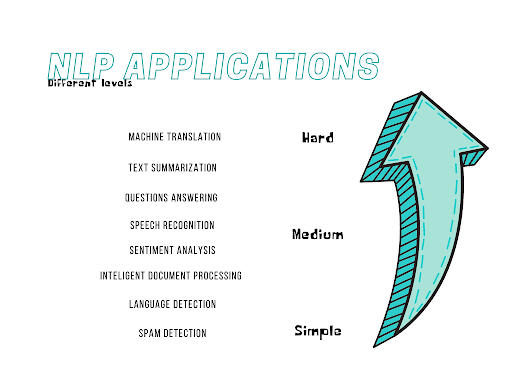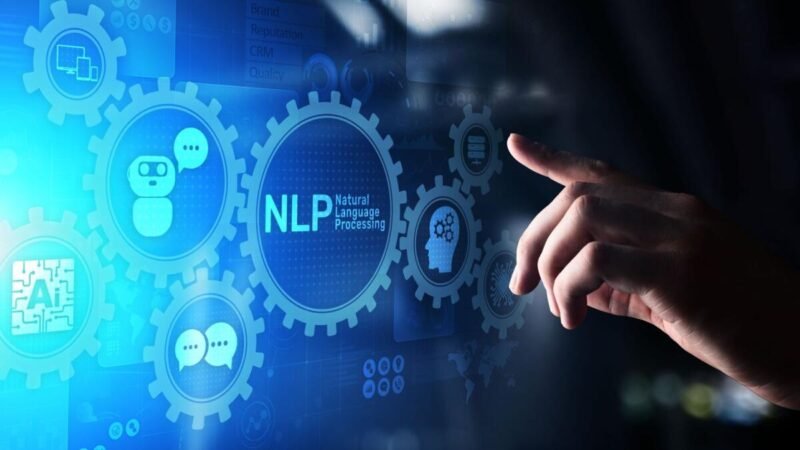Computer linguistics is a scientific discipline concerned with the computer modeling of natural language competency and the solving of application challenges in text and audio processing.
The era of computational linguistics started in the 1950s with the studies of renowned American linguist, publicist, and philosopher Noam Chomsky on the general framework of natural language structure, as well as innovative tests in machine translation and the first AI-natural language understanding software.

Computational linguistics is a technology for extracting relevant information from large amounts of text. The need for intelligent automatic text processing is driven primarily by two factors, both of which are related to the volume of texts generated.
In order to make an educated choice or locate information, you must read, comprehend, and consider a large number of documents. To get information about the predicted demand for a certain product on the Internet next month, specialists would need to examine manuscripts dating back over a century. In such cases, using a computer is the only way to complete the task.
Because computational linguistics is built on natural language, its advancement is impossible without a solid understanding of general linguistics.
Linguistics is the study of natural human language, its structure, and how it works. Linguistics is divided into various sections:
- Phonology and graphics study the side of language signs perceived by hearing or sight, and semantics – on the contrary, their semantic, understandable and translated part.
- Morphology deals with the internal structure and external form of words, including parts of speech and their categories.
- Syntax studies the structure of sentences, the rules of compatibility and order of words in a sentence, as well as its general properties as a language unit.
These sections correspond to the stages of automatic text analysis, which is to extract grammatical and semantic information from the given text in natural language.
Tasks of computer linguistics:
- Speech recognition and synthesis.
- Text Generation.
- Automatic translation of texts.
- Creation and use of electronic corpora of texts.
- Extracting information from text.
- Auto Abstraction.
- Automatic detection and correction of text input errors on the computer.
- Creation of question-response systems.
- Creation of electronic dictionaries, thesauruses, ontologies.
NLU and NLG: Approaches to Computational Linguistics
The NLP has two tasks: natural language generation (NLG) and understanding (NLU).
Language generation is a function that helps you create, for example, short fragments of chatbot text or customizable content for applications. Understanding natural language allows you to receive commands from the person, as well as sort information, to analyze the content of the text and its emotional coloring.
How Data Science helps people with disabilities
Computational linguistics is the basis of technologies that are created to help people with disabilities.
According to the World Health Organization, disability affects more than 1 billion people – about 15 percent of the world’s population. The number of people on our planet with disabilities is increasing due to chronic illness and aging.
According to the UN Convention, persons with disabilities are persons with persistent physical, mental, intellectual, or sensory disabilities that prevent them from participating fully in society on an equal basis with others. Developments in natural language processing are designed to make life easier for this population.
Deafness and hearing impairment is the most common form of sensory disability in the world. Today, more than 5% of the world’s population, or 430 million people, suffer from hearing loss, and WHO predicts that this number will double by 2050.
Sensory impairments such as blindness and speech loss are also common around the world. In this regard, technologies are emerging to facilitate the communication of these people. Among them, speech recognition and synthesis services are the most common.

What tasks computer linguistics solves to help people with disabilities
- Speech synthesis and recognition for physical or cognitive impairments.
- Conversion of speech to improve intelligibility.
- Speech and language technologies for day-to-day care and the creation of a minimally dependent living environment.
- New approaches to modeling and machine learning for assistive alternative communication.
- Personalized voices for assistive communication and speech synthesis based on limited data.
- Multimodal user interfaces and dialogue systems adapted to auxiliary technologies.
- NLP for cognitive aid applications.
- Presentation of graphic information for people with visual impairment.
- Speech and NLP are applied to interface applications.
- Brain-computer interfaces for language processing applications.
- Speech, natural and multimodal interfaces for auxiliary technologies.
- Web availability, text simplification, customized presentation modes such as speech or special characters.
- Deployment of speech instruments and NLP in clinics.
- Linguistic resources, case charts, and annotations.
Innovations that are already adopted in a real-life
Eyegaze Edge
The American company LC Technologies invented a device that allows people to control the computer with one eye. Eyegaze Edge helps users with cerebral palsy, muscle dystrophy, Rhett syndrome, and other immobilizing impairments to write messages, generate speech, and use the Internet.
Project Euphonia from Google
Euphonia is a research initiative to collect and analyze voice samples of speech-impaired people. As part of the project, the corporation plans to create a machine learning system that recognizes speech as well as individual voice reproduction technologies.
Google’s Live Relay
Another Google initiative is designed to help deaf or hard of hearing people. During a telephone conversation, the program converts the speaker’s speech into text and speaks on behalf of the user while the user is typing the message. There is no Internet connection required to use the tool.
Cognixion One
California-based startup Cognixion develops augmented reality headsets for people with speech impairment. The device will have a neural interface and will be able to read thoughts, then reproduce them as clear speech.
Livox
The Livox is a communication application based on pictograms that helps people with a wide range of visual and motor impairments to participate in the conversation. Using a machine learning and NLP classifier, the service identifies specific issues and offers users the most relevant pictograms.
NLP engineer – what for?
MarketsandMarkets expects the global natural language processing (NLP) market to grow to $35.1 billion by 2026, with an expected annual growth rate of 20.3%.
We have talked about what computational linguistics and NLP are about here. In this article, we will talk about the computer linguist – a specialist who develops programs for the processing of languages and texts. What does he do, and what skills and knowledge should we have written in the previous article.
What tasks does the computer linguist solve?
A computer or digital linguist is a specialist who develops algorithms and programs capable of reproducing a person’s cognitive language activity: reading, listening, speaking, engaging in dialogue, and translating from one language to another.
Read Dive is a leading technology blog focusing on different domains like Blockchain, AI, Chatbot, Fintech, Health Tech, Software Development and Testing. For guest blogging, please feel free to contact at readdive@gmail.com.





